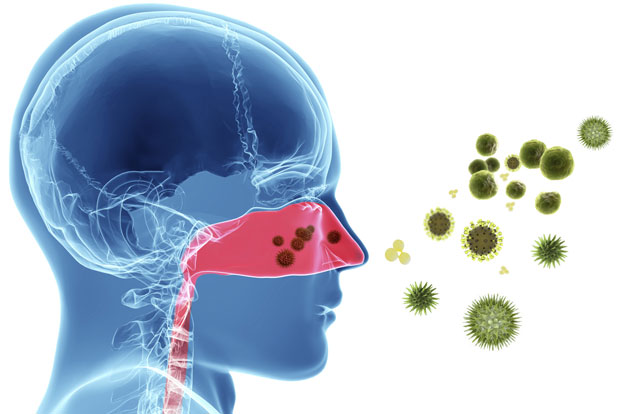Despite what many people think, bacteria and viruses are not the same things. While you don’t have to be a medical professional and study the differences, it’s important to know why they are not similar, because treating one for conditions caused by the other has serious repercussions for mankind.
Bacteria and viruses have some things in common. Both are spread by sneezing, coughing and contact with infected people; both can be acquired from contaminated food, water or surfaces; and both can be obtained from pets, insects, livestock and ticks. Both can cause illnesses ranging from mild to severe, with symptoms like sneezing, coughing, inflammation, fever, diarrhea, vomiting, fatigue and general aches and pains.
And yes, both can be deadly. Ancient history has shown the catastrophic effect of such bacteria-borne and viral diseases as the bubonic plague and smallpox, both of which killed millions of people. In more recent times, epidemics like the influenza and HIV infections have killed millions.
Mostly, the differences between bacteria and viruses relate to their structures and response to specific medications. Therein lies the biggest issue.
Tale of the Tape
Bacteria are single-celled microorganisms that are found practically everywhere, including all over the human body. They can thrive practically everywhere, including inside the body. Most of the time, bacteria either cause no harm or are helpful, as in the intestines, where they help to digest food.
Less than 1 percent are harmful, but there are some infectious bacteria that can cause such conditions as tuberculosis, urinary tract infections and strep throat. Bacteria are complex and have a rigid wall and a rubber-like membrane that surrounds cellular fluid. They are capable of reproducing without assistance and can survive extreme conditions, including radioactive ones. It’s been said that bacteria will be the last living thing on the planet should Armageddon strike.
Viruses are smaller than bacteria and require a living host to thrive and multiply. They can be active in plants, animals or people. They all have a protein coat and a core composed of genetic material.
A virus acts by entering the body and taking over some of the cells, devoting them to reproducing the virus. Major diseases like AIDS, chicken pox and the common cold are caused by viruses. Some viruses aim at specific body parts, including the liver or blood.
To confuse the issue, some diseases – meningitis, diarrhea and pneumonia, to name three – can be caused by either bacteria or viruses. But there has to be a distinction drawn because the two require very different treatments. Antibiotic drugs can kill bacteria but are not effective against viruses.
The major problem is when viruses are treated with antibiotics, for that affords an opportunity for bacteria to become antibiotic resistant. That is a major medical problem because it takes away perhaps the best tool doctors have for fighting infections. Some viruses can be vaccinated against, relying on the strength of the immune system to fight off further infection. But for the most part, viruses like HIV and the common cold are believed to be incurable, at least with the medical knowledge we have to date.
Problems with Antibiotics
The biggest difference in approaches to treatments for bacteria and viruses is the use of antibiotics. When they first appeared in the 1940s, antibiotics were hailed as miracle drugs. For the first time, the risk of surgical infections could be dealt with by fighting off infectious bacteria.
But over-use of antibiotics has created a problem. The bacteria have adapted to certain strains of antibiotics, allowing them to continue damaging cells. The drugs that formerly killed them are no longer effective, or not as effective. The formal term is antibiotic-resistant, and that issue is growing.
The cause for the antibiotic resistance lays partially with humans. Because antibiotics were widely regarded as “miracle drugs” when they were introduced, patients demanded to be treated with them. Busy doctors often prescribed antibiotics based on suspicion before a formal diagnosis, resulting in patients taking antibiotics that would have little effect on infections like strep throat or certain ear infections.
This constant exposure and the presence of antibiotics in the food chain because of advances in modern farming resulted in the development of resistant strains, most of them capable of passing along their immunity as they reproduced.
While the medical community anticipated that resistance, antibiotics overuse has sped up the immunity cycle to the point where what was believed to be a future problem has arrived today. The so-called “superbugs” have emerged, resistant to standard treatments and capable of reproducing that immunity.
There are no tools against these superbugs. Adding to the potential harm, any use of antibiotics in hopes of defeating them may kill off the good bacteria and harmless ones in the body, potentially adding to the inability of the system to fight off infection.
When Not to Use Antibiotics
Today, medical professionals do not recommend using antibiotics for sore throats, the flu, the common cold, coughs, bronchitis, some sinus infections, most ear infections and the stomach flu. There are certain strains of gonorrhea that have developed immunity as well, making treatment more difficult, and many doctors have stopped using antibiotics for upper respiratory treatments, once considered a standard use.
Education on when to use antibiotics is important for patients. Patients should not pressure doctors on when to use antibiotics, and patients should avoid grey-market or Internet drug sources for antibiotics. This overuse creates resistant strains, limiting future options.
The Centers for Disease Control and Prevention predict that more than 2 million people will develop antibiotic-resistant infections in the next year. That means an anticipated 20,000 additional deaths and longer illnesses, potentially longer hospital stays and higher costs for treatment.
In short, knowing what can be done is everyone’s duty. Do not demand antibiotic treatment and avoid taking them without a doctor’s supervision.

Leave a Reply